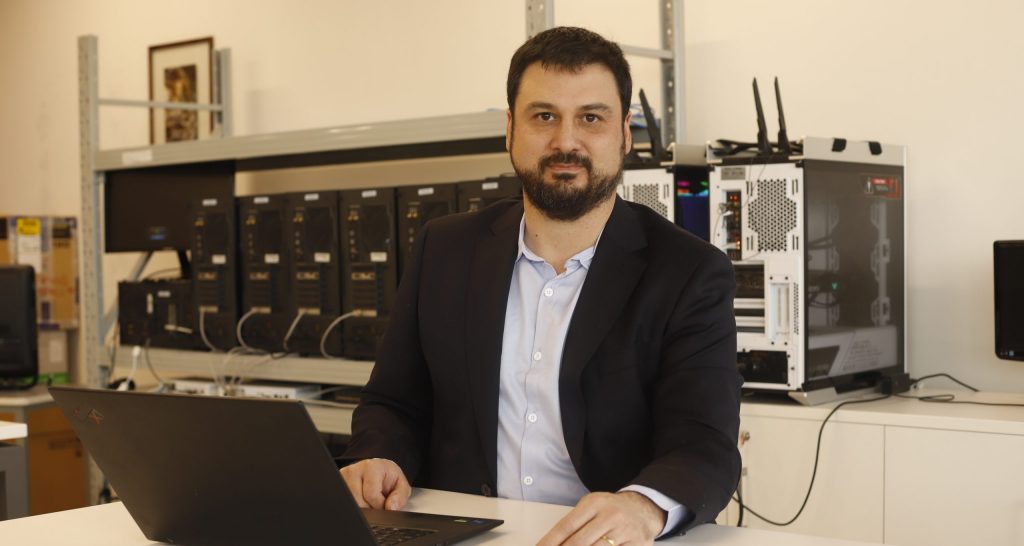José Antonio Abell, an academic at the School of Engineering and Applied Sciences of Universidad de los Andes, Chile, is leading a project to anticipate the behavior of structures in the event of an earthquake in Santiago on the San Ramón fault using artificial intelligence and supercomputing.
In Santiago, there is a geological threat that has been latent for years: the San Ramón fault. The geological structure extends for about 25 kilometers from the north of Lo Barnechea to the south of Puente Alto, and could generate an earthquake of great magnitude under the feet of more than 6 million people. In response to this risk, the academic of the School of Engineering and Applied Sciences José Antonio Abell , has focused his research on understanding the possible structural consequences of an earthquake originating on this fault. Article published in La Tercera

"We are developing advanced methodologies, based on high-performance computing and artificial intelligence, to simulate and predict what happens to structures during earthquakes." He is working with with an international network of partners, such as Jorge Crempien, who is dedicated to seismological engineering and belongs to Pontificia Universidad Católica de Chile; Peter Arduino which applies seismic, soil and foundation modeling and has provided access to Texas supercomputers, the largest in the world, and is from Washington State University, USA; Davide Gorini, who works on soil issues and is from University of Trento, Italy; Guido Camata from University of Chieti-Pescara, Italy; and Massimo Petracca of ASDEA Software, who provide support in model preparation, high-performance computing, and scientific data visualization. Also collaborating is an academic from our School, Rafael Delpiano, who provides support on topics related to statistics and probability. And there are PhD students in UANDES Engineering that are collaborating with Abell, such as Nicolás Mora Bowen, who was awarded a scholarship, and Patricio Palacios, who was awarded an IAF Fellowship.
"We are using supercomputing capabilities, that is, more than one computer working simultaneously on the same problem, and artificial intelligence in solving large, complex structural engineering problems. This allows us to simulate structures more quickly - a couple of hours instead of weeks of computation - or to simulate with higher resolution to see more details of each physical phenomenon. For this, we set up a supercomputer in the civil works lab, but we also have access to other supercomputing centers around the world," explains Abell, who recently closed a Fondecyt Initiation grant project focused on evaluating what could happen to buildings in Santiago if the San Ramón fault becomes active.
Abell's interest in this topic stems from a conviction: "I think there is still a lot to develop in improving the type of simulations we do in civil engineering, in pursuit of more durable, economical structures, while maintaining a high safety standard. We want to generate a direct impact on society, allowing a more efficient use of resources and better preparation for natural disasters," he explains.
A Relentless Seismic History
Chile, located on the Pacific Ring of Fire, has experienced some of the most powerful earthquakes on record worldwide. In the past 30 years, the country has experienced events such as the 1995 earthquake in Antofagasta (magnitude 7.3), the 2010 earthquake in the center-south (8.8), the one in Iquique in 2014 (8.2), and the one Illapel in 2015 (8.3), among others.
However, what particularly worries experts is that, unlike the large earthquakes generated off the coast by the subduction of the Nazca plate under the South American plate, the San Ramón fault is a crustal fault, located directly beneath densely populated areas. Recent studies indicate that this fault could generate earthquakes of up to 7.5 magnitude, with devastating consequences for Santiago's infrastructure, especially in districts such as La Reina, Peñalolén, Las Condes, and Ñuñoa.


